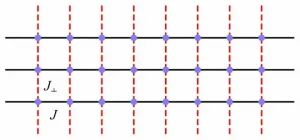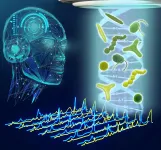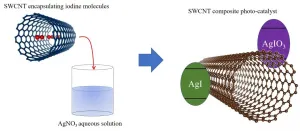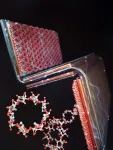Nrf2: The custodian regulating oxidative stress and immunity against acrylamide toxicity
A study using genetically modified mice shows that a protein called Nrf2 increases the expression of protective genes in the acrylamide-induced toxic response
2021-06-21
(Press-News.org) Acrylamide is a toxic chemical compound that affects the nervous system. Not only is it widely used in industries such as paper production, plastics, and wastewater management, but it is also a byproduct of commonly used food processing methods, which makes human exposure to acrylamide inevitable. Therefore, many studies have focused on understanding the toxic effects of acrylamide and our body's response to them. Generally, in response to toxicity, the body's cells release protective factors and antioxidants to remedy the damage. This response is activated by various cellular machinery. One such activator is a protein called "nuclear factor erythroid 2-related factor 2" (Nrf2), which is a master regulator of the response to oxidative stress and the immune system.
In a recent study, a team of scientists, led by Prof. Gaku Ichihara from Tokyo University of Science, reported the role of Nrf2 in acrylamide-induced neurotoxicity. Prof. Ichihara states, "Our study showed that Nrf2 has a protective role against neurologic damage and suggests it is through activation of antioxidant stress genes and suppression of proinflammatory cytokine genes."
In their study published in the journal Toxicology, Prof. Gaku Ichihara, along with his colleagues Prof. Masayuki Yamamoto from Tohoku University, Prof. Ken Itoh from Hirosaki University, Associate Prof. Seiichiroh Ohsako from The University of Tokyo, and Prof. Sahoko Ichihara from Jichi Medical University, used mice models to study the role of Nrf2 in acrylamide-induced neurotoxicity. They tested their hypothesis that when Nrf2 gene is removed, the neurotoxic effects of acrylamide will be amplified. For this, they developed "knockout" mice that could not produce Nrf2, and gave the Nrf2-knockout mice and a set of counterpart "wild-type" mice that could produce Nrf2 different concentrations of acrylamide for 4 weeks. Then, they compared the neurotoxicity between both groups of mice using various sensory and motor tests, immunohistochemistry, and protein and gene expression analyses.
The scientists found that the Nrf2-knockout mice had severe neurotoxic effects such as sensory and motor system dysfunction and axonal damage. While these mice produced fewer antioxidants and protective factors in response to acrylamide, they also showed enhanced release of pro-inflammatory chemicals, called "cytokines," in the brain, which can potentially cause additional damage. Additionally, as different doses were given to the mice, the scientists also determined that the neurotoxicity was dose-dependent.
Previous studies have established the role of Nrf2 as a master regulator of protective genes but this study explained the specific mechanisms of immune response to acrylamide-induced toxicity, with Nrf2 at the center of it all. As Prof. Ichihara states, "The results document the first known morphological and neuro-functional evidence of the regulatory role of Nrf2 in acrylamide-induced neurotoxic effects in mice."
The findings of this study are also immensely valuable in the field of disease biology, as recent studies have shown a link between air pollution and Alzheimer's disease. Since the air contains other acrylamide-like chemical pollutants with similar neurotoxic effects, the study's findings could prove useful in the prevention of Alzheimer's disease.
Prof. Ichihara and his team's study is certainly a timely one, as reports of acrylamide intoxication are on the rise and further research is required to better understand the specific mechanisms by which the body protects itself from harm.
INFORMATION:
Reference
Title of original paper: Genetic ablation of Nrf2 exacerbates neurotoxic effects of acrylamide in mice
Journal: Toxicology
DOI: https://doi.org/10.1016/j.tox.2021.152785
About The Tokyo University of Science
Tokyo University of Science (TUS) is a well-known and respected university, and the largest science-specialized private research university in Japan, with four campuses in central Tokyo and its suburbs and in Hokkaido. Established in 1881, the university has continually contributed to Japan's development in science through inculcating the love for science in researchers, technicians, and educators.
With a mission of "Creating science and technology for the harmonious development of nature, human beings, and society", TUS has undertaken a wide range of research from basic to applied science. TUS has embraced a multidisciplinary approach to research and undertaken intensive study in some of today's most vital fields. TUS is a meritocracy where the best in science is recognized and nurtured. It is the only private university in Japan that has produced a Nobel Prize winner and the only private university in Asia to produce Nobel Prize winners within the natural sciences field.
Website: https://www.tus.ac.jp/en/mediarelations/
About Professor Gaku Ichihara from Tokyo University of Science
Professor Gaku Ichihara is a faculty member at the Department of Occupational and Environmental Health at Faculty of Pharmaceutical Sciences, Tokyo University of Science. He graduated from School of Medicine, Nagoya University in 1988. In 2000, he received the Incentive Award from Japan Society for Occupational Health. He has also contributed to the field of nanotechnology. In 2013, he was the Chairperson of the 6th International Symposium on Nanotechnology, Occupational and Environmental Health. He has published more than 100 papers on his research interests: toxicology and occupational health.
Funding information
This work was supported by a Grant-in-Aid for Scientific Research from the Japan Society for the Promotion of Science (16H02965, 17H06396, 19H04279). F.A.E.'s PhD studies are funded by the Japanese Government Scholarship (MEXT).
[Attachments] See images for this press release:
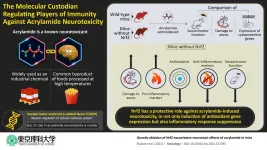
ELSE PRESS RELEASES FROM THIS DATE:
2021-06-21
Special diets, exercise programs, supplements and vitamins, there is everywhere something supposed to help us live longer. Whether it actually works has not always been shown, but the average life expectancy of people has increased over the last 150 years. A study by an international team of researchers, including Claudia Fichtel and Peter Kappeler, scientists in the Behavioral Ecology and Sociobiology Unit at the German Primate Center (DPZ) - Leibniz Institute for Primate Research in Göttingen, indicates that we probably cannot slow down aging. The comparative studies with humans and non-human primates, indicates that it is not the rate at which humans age that slows ...
2021-06-21
Washington, DC, June 21, 2021 - Depression in youth, between the ages of 10 and 24 years, is both a leading cause of stress and a possible risk factor for future diseases and impairment. Now, a study in the Journal of the American Academy of Child and Adolescent Psychiatry (JAACAP), published by Elsevier, confirms that depression in childhood or adolescence is associated with higher levels of adult anxiety and substance use disorders, worse health and social functioning, less financial and educational achievement, and increased criminality.
The findings are based on the Great Smoky Mountains Study, an ongoing longitudinal ...
2021-06-21
TEL AVIV, Israel and RALEIGH, NC, June 21, 2021, RedHill Biopharma Ltd. (Nasdaq: RDHL) ("RedHill" or the "Company"), a specialty biopharmaceutical company, today announced presentation of the positive Phase 2 safety and efficacy data for oral opaganib (Yeliva®, ABC294640) in hospitalized patients with COVID-19 pneumonia at the World Microbe Forum (WMF) 2021 (poster #: 5574).
Results and post hoc analyses of data from the 40-patient U.S. Phase 2 study were presented in a poster entitled, "Opaganib, an Oral Sphingosine Kinase-2 (SK2) Inhibitor in COVID-19 Pneumonia: A Randomized, Double-blind, Placebo-controlled Phase 2A Study, in ...
2021-06-21
In 2013, François ENGLERT and Peter HIGGS won the Nobel Prize in Physics for the theoretical discovery of a mechanism that contributes to our understanding of the origin of mass of subatomic particles, which was confirmed through the discovery of the predicted fundamental particle by the A Toroidal LHC Apparatus (ATLAS) and the Compact Muon Solenoid (CMS) experiments at The European Organization for Nuclear Research (CERN)'s Large Hadron Collider in 2012. The Higgs mode or the Anderson-Higgs mechanism (named after another Nobel Laureate Philip W ANDERSON), has widespread influence ...
2021-06-21
A Curtin University-led study of ancient bones on South Australia's Kangaroo Island has provided new information about the Island's past fauna and an insight into how species may live there in the future.
Published in Quaternary Science Reviews, the researchers analysed around 2,000 bone fragments with the aim of eventually being able to establish a more complete picture of past biodiversity on the Island.
Lead researcher Dr Frederik Seersholm from Curtin's School of Molecular and Life Sciences said DNA studies on such a large scale have never been done on the Island before.
"We identified 33 species, 10 of which are extinct on the island today. We also found DNA traces from both the ...
2021-06-21
A research team led by Professor Hongzhe SUN, Norman & Cecilia Yip Professor in Bioinorganic Chemistry and Chair Professor from Research Divison for Chemistry and Department of Chemistry, Faculty of Science, in collaboration with Dr Richard Yi-Ysun KAO, Associate Professor from the Department of Microbiology, Li Ka Shing Faculty of Medicine, and Dr Aixin YAN, Associate Professor from School of Biological Sciences, the University of Hong Kong (HKU), discovers that silver (Ag)-based antimicrobials can effectively combat antibiotic resistant Staphylococcus aureus by targeting multiple biological pathways via functional disruption of key proteins and can be further exploited to enhance the efficacy of conventional antibiotics ...
2021-06-21
Microalgae are "simple" organisms of single cells, yet they pack a mighty potential punch when it comes to helping humanity achieve carbon neutrality, according to researchers from the Qingdao Institute of Bioenergy and Bioprocess Technology (QIBEBT) of the Chinese Academy of Sciences (CAS). Their metabolic activities play fundamental roles in global carbon cycling and convert carbon dioxide into a wide variety of high-value macromolecules.
Now, the QIBEBT researchers have developed a way to rapidly determine exactly which microalgae -- out of the millions of variations -- can most readily convert carbon dioxide into valuable compounds that can be used for fuels, food and drugs. They published ...
2021-06-21
Fragrances are functional molecules with a pleasant scent that are widely used in aqueous products (cosmetics and detergents) and on surfaces such as textiles, leather and wallpaper. However, maintaining gentle and continuous scent on these items is an ongoing challenge in the field of flavours and fragrances.
Profragrances are delivery systems used to control the release of the volatile compounds in fragrances. They have fragile chemical bonds that can be stimulated by ambient conditions such as light, temperature, pH value and even oxygen. Drawing on these molecular profragrances, ...
2021-06-21
Carbon dioxide (CO2) emissions from human activities have risen drastically over the last century and a half and are seen as the primary cause of global warming and abnormal weather patterns. So, there has been considerable research focus, in a number of fields, on lowering our CO2 emissions and its atmospheric levels. One promising strategy is to chemically break down, or 'reduce,' CO2 using photocatalysts--compounds that absorb light energy and provide it to reactions, speeding them up. With this strategy, the solar powered reduction of CO2, where no other artificial source of energy is used, becomes ...
2021-06-21
Scientists have used a compound made from a starch derivative and baking soda to help convert mechanical to electrical energy. The approach, developed by scientists at Daegu Gyeongbuk Institute of Technology (DGIST), with colleagues in Korea and India, is cost-effective and biocompatible, and can help charge low-energy electronics like calculators and watches. The details were published in the journal Advanced Functional Materials.
"Triboelectric nanogenerators harvest mechanical energy and convert it into an electric current," explains DGIST robotics engineer Hoe Joon Kim. "But many of the materials used in these devices are considered a biohazard and are not suitable for wearable ...
LAST 30 PRESS RELEASES:
[Press-News.org] Nrf2: The custodian regulating oxidative stress and immunity against acrylamide toxicity
A study using genetically modified mice shows that a protein called Nrf2 increases the expression of protective genes in the acrylamide-induced toxic response


